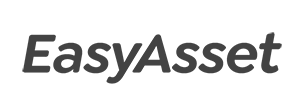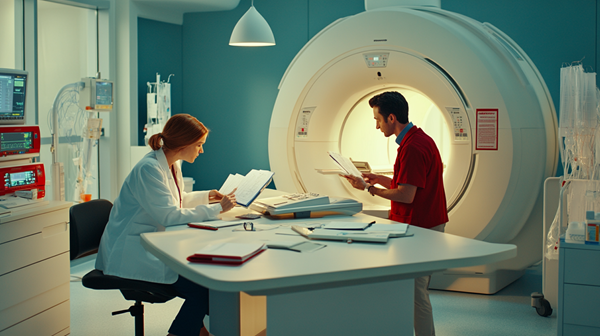Key takeaways
- High rejection rates: Over 29% of medical equipment loan applications are rejected in Australia due to poor documentation or mismatched finance structures
- Overfinancing risks: Many clinics overestimate what they can afford, leading to average equipment loan default rates of 4.2% in the healthcare sector.
- Hidden costs: Equipment financing contracts often include up to 7% in hidden fees if not reviewed carefully.
- Wrong finance type: Choosing the wrong finance product (e.g., lease instead of chattel mortgage) can cost your clinic $20,000+ over five years due to tax and residual value misalignment.
- Outdated equipment risks: 1 in 5 practices end up financing obsolete or poorly supported equipment due to lack of future-proofing during procurement.
- Mismatch with operational needs: Around 36% of small practices report that their financed equipment didn’t fully match their day-to-day operational requirements.
Introduction: Why getting equipment finance right matters
Financing your medical equipment can unlock growth, efficiency, and improved patient care — but it’s not without its risks. Whether you're setting up a new clinic, upgrading diagnostic tools, or investing in specialist equipment, the wrong finance decisions can cost you tens of thousands and put your business under pressure.
This guide breaks down the most common financing mistakes clinics and healthcare professionals make in today’s Australian market — and how to avoid them. We’ll cover what to look out for, real costs you might not expect, and how to future-proof your decisions.
Choosing the wrong finance structure
There’s no one-size-fits-all approach to financing medical equipment. Depending on your business model, cash flow, and tax structure, some options will serve you better than others.
Common pitfalls:
- Opting for a lease when ownership is needed: Leasing can offer lower upfront costs, but if you plan to own the equipment long-term, a chattel mortgage or hire purchase may be more cost-effective.
- Poor understanding of tax implications: Financing options have very different GST, depreciation, and tax treatment. A mismatch could see your clinic paying thousands more annually in avoidable tax.
- Balloon payments without planning: These reduce monthly repayments but can create a financial cliff at the end of the term.
Avoid this by:
- Consulting a finance broker or accountant before committing.
- Aligning your finance term with the expected lifespan of the equipment.
- Checking if your clinic structure (sole trader vs company) affects tax outcomes.
Underestimating total cost of ownership (TCO)
It’s easy to focus just on the monthly repayments — but that’s only one piece of the puzzle.
What’s often overlooked:
- Installation and fit-out costs (which can exceed $20,000 for imaging and surgical equipment).
- Training for staff, often not included in finance.
- Software subscriptions and maintenance costs — which may increase annually.
- End-of-lease costs or buyout fees that weren’t clearly disclosed upfront.
Financing outdated or non-compliant equipment
Technology in healthcare evolves rapidly. If you finance equipment that doesn’t meet future standards or compliance needs, you may find yourself paying for something that’s already obsolete.
Real-world impact:
- Practices that didn’t upgrade to My Health Record-compatible systems in time faced both regulatory penalties and a 15–20% drop in operational efficiency.
- Outdated imaging equipment may be non-compliant with Australian Radiation Protection standards, requiring costly retrofits.
Avoid this by:
- Asking the supplier for details on software updates, compliance certificates, and support timelines.
- Ensuring your finance term aligns with the equipment’s technological relevance, not just its physical durability.
Not reading the fine print on finance contracts
Medical equipment finance can involve detailed and technical contracts — and many practice owners sign without fully understanding them.
Key dangers:
- Hidden fees, such as early repayment charges, administration fees, or compulsory insurance.
- Lock-in service contracts bundled into finance without flexibility.
- Residual risk: At the end of the term, the buyout value might be much higher than expected.
Overfinancing or underestimating your repayments
It’s tempting to finance more than you need when repayments seem manageable. But poor forecasting can lead to cash flow issues.
Did you know?
- ASIC reports that 15% of small healthcare businesses in Australia face cash flow issues directly linked to overextended finance arrangements.
- Interest rates for equipment finance have fluctuated between 7.5% and 11.2% over the past year — and rising rates can significantly increase repayment burdens on variable contracts.
Avoid this by:
- Creating a 12-month and 36-month cash flow projection with repayments built in.
- Stress-testing your budget to factor in unexpected costs or seasonal downturns.
Not shopping around or comparing lenders
The gap between the best and worst financing deals can be massive — and too many clinics just go with their equipment supplier’s first recommendation.
What you’re missing out on:
- Rates as low as 6.75% p.a. compared to others still offering double-digit figures.
- More flexible terms like seasonal repayment structures that match your revenue cycles.
- Lenders with healthcare-specific underwriting who understand your equipment's value and lifecycle.
What to do instead:
- Compare at least 3–5 lenders, including specialist medical finance brokers.
- Ask about approval times, prepayment options, and what happens if you want to upgrade mid-term.
Ignoring the asset’s resale or upgrade potential
Some equipment depreciates rapidly, while others retain a good portion of their value. Knowing this upfront can influence both your finance choice and your exit strategy.
Examples:
- Ultrasound machines retain around 60% of value after 3 years (Source: MedTech Market Report 2024).
- Practice management software and outdated dental chairs can lose 80%+ of value in 24 months.
Plan ahead by:
- Asking for estimated resale value or trade-in options.
- Choosing finance with upgrade clauses or early-exit flexibility.
Frequently asked questions (FAQ)
1. What’s the best type of finance for medical equipment in Australia?
It depends on your goals. Chattel mortgages are popular for ownership and tax benefits. Leases suit clinics wanting flexibility and upgrades. Always compare based on your cash flow, tax structure, and how long you’ll use the equipment.
2. How much should I budget for medical equipment financing?
Expect to pay between 7% and 10% p.a. on finance in 2025, with additional costs like establishment fees (~$400–$1,000) and potential balloon payments.
3. Can I finance used medical equipment?
Yes, but it depends on the lender and equipment type. Make sure it’s compliant with current Australian standards and check warranties and servicing availability.
4. What documents do I need to apply?
Most lenders will ask for:
- Two years’ business financials
- Recent BAS statements
- Equipment quotes
- Business plan or use-case if your practice is new
5. How long does approval take?
Approval can take 2–10 business days, depending on your lender, documentation, and whether you're a new or existing business.
Conclusion: Make your finance work for your practice
Financing your medical equipment can unlock major advantages — but only if done right. By steering clear of common traps like underestimating costs, choosing the wrong finance type, or failing to plan for the full lifecycle of your gear, you’ll be in a stronger position to grow your clinic sustainably.
The Australian medical finance landscape in 2025 is more competitive than ever — so take the time to compare, ask the hard questions, and plan for the future. Your bottom line (and your patients) will thank you.


